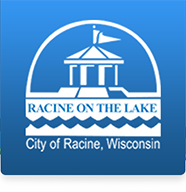USS Racine
-
USS Racine (PF-100)

USS Racine (PF-100) was the first ship to be named after Racine, WI
The first Racine (PF-100) was laid down by the American Shipbuilding Co., Cleveland, Ohio, 14 September 1943; launched 15 March 1944; sponsored by Mrs. Francis H. Wendt; and commissioned 22 January 1945 at Houston, Tex., Lt. Comdr. C. H. Waring, USCG, in command.
A Navy patrol frigate manned by the Coast Guard, Racine underwent shakedown off Bermuda and Guantanamo Bay, Cuba, escorting Italian submarine Atropo from one to the other. Returning to the east coast, she departed Norfolk 2 April for Oran, Algeria, with convoy UGS 84, returning to the United States with convoy GUS 86.
After training exercises in Casco Bay, Maine, and conversion at New York to a weather patrol type for distant duty, Racine steamed 7 August for the Panama Canal and Pearl Harbor, On 6 September she departed Pearl Harbor for Tacloban, Leyte Gulf, Philippine Islands, arriving 23 September to serve as a weather station ship. On 14 April 1946 she departed Samar, Philippine Islands, to return to the United States, arriving Seattle 12 May.
Racine decommissioned at Bremerton, Wash., 27 June 1946 and was struck from the Navy list 19 July 1946. She was sold to Franklin Ship Wrecking Co., Hillside, N.J., 2 December 1947 for scrapping.
References:
This page incorporates test from the public domain Dictionary of American Naval Fighting Ships. The article can be found here.
-
USS Racine (LST-1191)

USS Racine (LST-1191) was the second ship to be named after Racine, WI.
She was the thirteenth of 20 ships of the improved Newport class of Landing Ship, Tank (LST) built to replace the traditional bow door design LSTs of World War II. She was capable of a sustained speed of 20 knots (37 km/h; 23 mph). A stern gate to her tank deck permitted unloading of tracked assault amphibious vehicles (AAV) into the water, or the unloading of other vehicles into a landing craft utility (LCU), onto a pier, or directly into the water. Her ability to adjust her draft, accompanied by her unique 110-foot (34 m) long 75-ton capacity bow-ramp design and her bow thruster, helped bring a new degree of responsiveness and supply to the amphibious fleet.
History:
The second Racine (LST-1191) was laid down by the National Steel & Shipbuilding Co., San Diego, Calif., 13 December 1969; and launched 15 August 1970; sponsored by Mrs. Edwin B. Hooper, wife of Vice Adm. Edwin B. Hooper USN (Ret.), Director of Naval History; Racine was placed in commission 9 July 1971, Comdr. Daniel W. Anderson in command.
She remained at Long Beach, completing her fitting-out until 9 August, when she departed for San Diego. Racine underwent tests and participated in exercises off the west coast until 8 June 1972. At that time, she steamed out of San Diego for a South American cruise with a group of NROTC Midshipmen. She visited Valparaiso, Chile; Callao, Peru; and the Canal Zone, returning to San Diego 17 July. On 13 September, she embarked on a tour of duty with WestPac. She remained in the Far East, shuttling men and material between Vietnam and various American bases in the area, until 26 April 1973, when she weighed anchor for San Diego. Racine arrived at San Diego 17 May 1973.
Note: Racine decommissioned on 2 October 1993 and, as of 2004, remained in inactive reserve at Pearl Harbor until July, 2018. She was eventually sunk for target practice on July 12th, 2018.
References:
This page incorporates test from the Naval Vessel Register, which, as a U.S. government publication, is in the public domain. The entry can be found here.



